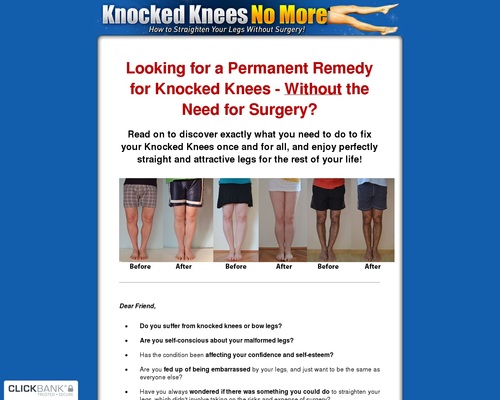Choosing a career path in fitness is a significant challenge new (and even veteran) health and exercise professionals grapple with. The many specialties and subdisciplines associated with the health and fitness industry make the process less black and white and more multichromatic, which can make decision-making a real challenge.
Below is a detailed 5-step plan you can use as a decision-making tool to help you identify your most desired path while continuing to grow your skills and serve your clients. Before diving into the granular aspects of choosing a career path, let’s work together to acknowledge one thing: A “career path,” much like behavior change, is not a linear road. It’s mostly amorphous in the beginning and naturally takes shape as you grow in your experience, knowledge and skills.
A career path is made up of the various positions or jobs you hold over time. It’s possible and common to move upward holding more advanced or high-level administrative positions or to move laterally into similar positions or jobs at different organizations.
A Personal Look at One Path
To make this connection more “real life” and personalized, I offer my own career path as an example.
It started in 2003 after I graduated with my bachelor’s in exercise science. I obtained my first NCCA-accredited certification in 2004 and started personal training (a role I still love today). During that time, I applied for and entered graduate school to earn a master’s in kinesiology and health. While in graduate school, I served as a clinical research manager for a National Institutes of Health grant.
Following that experience, I accepted a role as an exercise physiologist and fitness center coordinator at an outpatient physical therapy clinic. Through my job roles and knowledge growth, I felt drawn to teaching and writing while serving others. I took a leap and accepted a job as a health and human performance department chair and instructor in higher education. As I worked in that role for almost 10 years, I pursued more certifications and eventually a doctorate in adult and post-secondary education. Though that degree is outside of what I call my “core science field,” I pursued it because of my love for teaching and my desire to be the best I could be in that role.
Flashing forward, I am still a full-time exercise science faculty member (and adjunct for other institutions). However, my interests have continued to expand and now I get to do all that I love and have been called to do. This includes teaching, writing, presenting, serving as a subject matter expert and instructional designer in the health and fitness space, providing virtual personal training, health and nutrition coaching, and mentoring new health and exercise professionals.
Sounds like a lot, right? If you’re reading this and you are overwhelmed by what I shared, remember this: I have almost a 20-year career path in the making. And mine started out the same as yours—with the first step.
A 5-step Process
Step 1: Self-evaluation
This step provides a necessary opportunity to self-reflect, which is a process critical to developing insight and recognition of those values we most need to fill our “occupational wellness” bucket.
If you are just starting out following graduation or completion of a certification, it’s common to seek an entry-level job to start building experience. Depending on your geographic location, options may be abundant or few. The point to this part of the process is to develop a vision for moving forward, not to “land” your dream job right out of the gate. Think of this stage as the beginning of your strategic plan.
At this stage, reflect on the following questions.
-
- What brings me joy and/or what energizes me?
-
- What do I consider an energy drain?
-
- What aspects of a job do I feel I need to be fulfilled?
-
- How do I define success?
-
- When my alarm goes off in the morning, what motivates me to get up and tackle the day? What are my sources of excitement?
-
- What is my top passion?
Once you answer these questions, you will have a better idea of what you need and what you desire. Then, you can look toward where you want to go in your career.
Step 2: Destination Evaluation
This step is all about exploring what roles, locations and environments meet the “bucket list” characteristics identified in step 1. This comes with a reminder that there are no “perfect” jobs; ups and downs in any job are part of the path, but you need to experience them to grow.
Here is where you brainstorm possibilities and roles you feel drawn to explore at a deeper level. Start by making a mind-map. On a sheet of paper, draw a circle with the title of your field (e.g., kinesiology), degree (e.g., exercise science), career interest (e.g., group fitness), or certification (e.g., certified health coach). From there, identify the environments that employ your destination role, research-related salary surveys and Bureau of Labor Statistics data, check job boards on agency websites, and identify other relevant information related to any questions you have about the “bucket list” role.
It is helpful to think about your destination in five-year increments. This helps you plan for growth and allows you to set incremental goals toward your “dream.”
Step 3: Knowledge Versus Interests
At this step, we need to make the distinction between knowledge and interests. Knowledge includes the concepts, theories, principles, skills and abilities you know and possess. Interests, in contrast, represent your personal and recreational pursuits as well as other aspects of your field you may not be knowledgeable about. During this step, summarize your knowledge set in bullet points. For example, if you are a certified personal trainer, you know topics such as methods of training and conditioning, movement assessment and screening, sound nutritional practices, and safe and effective program design.
While these are areas you know and understand, you may be interested in learning about prenatal exercise program design, behavior change or nutrition coaching. Repeat the exercise from above and summarize your list of interests in bullet points.
This sets you up to bridge the gap between what you know and what you want to know.
Step 4: The Gap
This step involves an in-depth examination of the gap between your knowledge and interest. For example, you may already know about safe and effective program design, but you are interested in applying that in a clinical or specialized manner (e.g., with special populations). What you already know about program design, though helpful, is related more to a general healthy population. Therefore, there is a gap you need to bridge.
This step helps you call out those areas you want or need to learn more about, which tells you if you need to pursue specific education, training or additional specialty or NCCA-accredited certifications.
Your knowledge and interests will grow as you gain experience and learn more over time. Overlap is to be expected. The point is to help you decide what your next area of learning will focus on. Always keep in mind the clients you are serving and ask, “What do I need to learn that would help me serve my clients’ interests at the highest level?”
Further, this might be the ideal time to start seeking a mentor to help you move forward.
Step 5: Next Steps
The fifth step is where you outline your action plan. Here, you aim to answer, “How will I go from point A to point B and then on to point C?”
By the time you reach the fifth step, you will have a solid idea of what you need to fill your occupational wellness goals, what “bucket list” job (or jobs) appeals to you, a detailed outline of what you already know and what you hope to learn, and steps to bridge the gap between your knowledge and interests. This means, you are ready to identify your next five steps or action items that will help you carve the career path that speaks to you.
As you would with a new client, set small, easily achievable steps or goals rather than trying to harness all your dreams right now. Building a career takes considerable time and patience, as well as guidance and mistakes. Being intentional and thoughtful about your career path will help you achieve your goals with greater success and joy.



